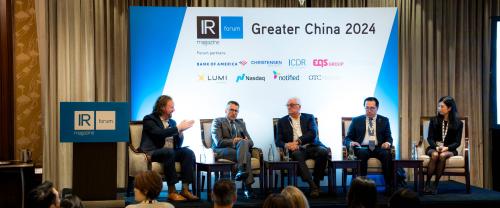Larger Aim stocks – those with a market cap above £600 mn ($775 mn) – have reached near parity with their FTSE 250 peers when it comes to analyst numbers following a post-Mifid II boost.
These larger Aim-listed companies have seen a 20 percent increase in analyst numbers, to an average of 6.1, since Mifid II came into force in January 2018, according to new research from Hardman & Co.
At the same time, FTSE 250 stocks have seen a small fall in analyst coverage, down 2.4 percent to an average of 6.3 analysts, in what Hardman & Co describes as an ‘analyst resource shift’. Research coverage for large-cap FTSE 100 stocks has fallen by 8 percent.
The figures might come as positive news for companies listed on Aim – especially given the pessimistic predictions for small caps ahead of Mifid II implementation – but Keith Hiscock, CEO of Hardman & Co, warns that the decline in research among larger firms is more worrying.
‘While the increase in coverage of larger Aim stocks is encouraging for long-time fans of the UK’s growth market, the shift raises further questions about the sustainability of broker research models,’ he says in a statement. ‘Main Market stocks represent a deeper market for institutions than Aim, so it is unlikely Aim research is as profitable for brokers as the Main Market research it seems to be replacing.’
Hardman & Co notes that ‘total research output across the market has struggled to grow since Mifid II, despite a net increase in companies on the combined Aim and Main Market since December 2017.’ It adds that industry surveys also point to reductions in analyst head counts and that, taken together, ‘these data points suggest brokers require each analyst to cover more companies than the pre-Mifid II period’.
‘We see more senior analysts departing broker firms, replaced by junior staff, if at all,’ continues Hiscock. ‘This means less experienced analysts, stretched more thinly across their coverage universe, as well as deteriorating research quality. ‘Copy and paste’ analysis of corporate announcements adds scant value to investors or companies.’
Hiscock also notes that liquidity has been falling across all segments of the UK market since Mifid II came into force, with mid and large-cap Aim-listed companies worst hit. ‘Volatility and illiquidity go hand in hand, with more volatile share prices discouraging long-term investors,’ he warns.
But other research this year, including a report from the London Business School, shows that small-cap liquidity has not fallen.
Many of the changes taking place among smaller-cap companies are pushing firms to take greater control of their IR programs, says Laura Hayter, head of policy and communications at the UK’s IR Society.
‘But the cost burden of accessing the capital markets is shifting more to companies themselves,’ she notes. ‘In particular, smaller-cap companies with fewer resources and greater budget constraints may need to explore alternative ways of getting research written on their company, as well as invest in their website and other technology platforms as they seek to maintain their company profile and sustain their investment story.
‘In a post-regulatory environment, helping management teams, particularly those smaller, less well-resourced companies to understand the importance of good communication and of winning the competition for capital is vitally important. Transparency and disclosure are at the heart of best practice IR, and clear and consistent communication of the equity story is a fundamental principle that should underpin all investor relations activities.’










